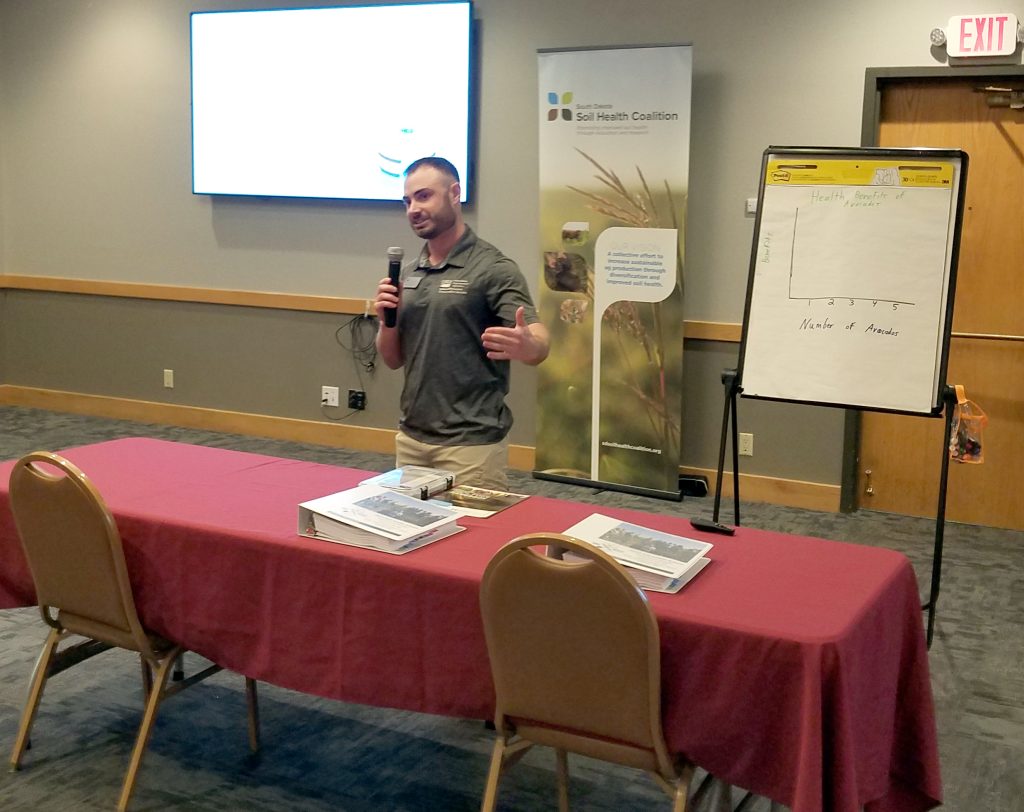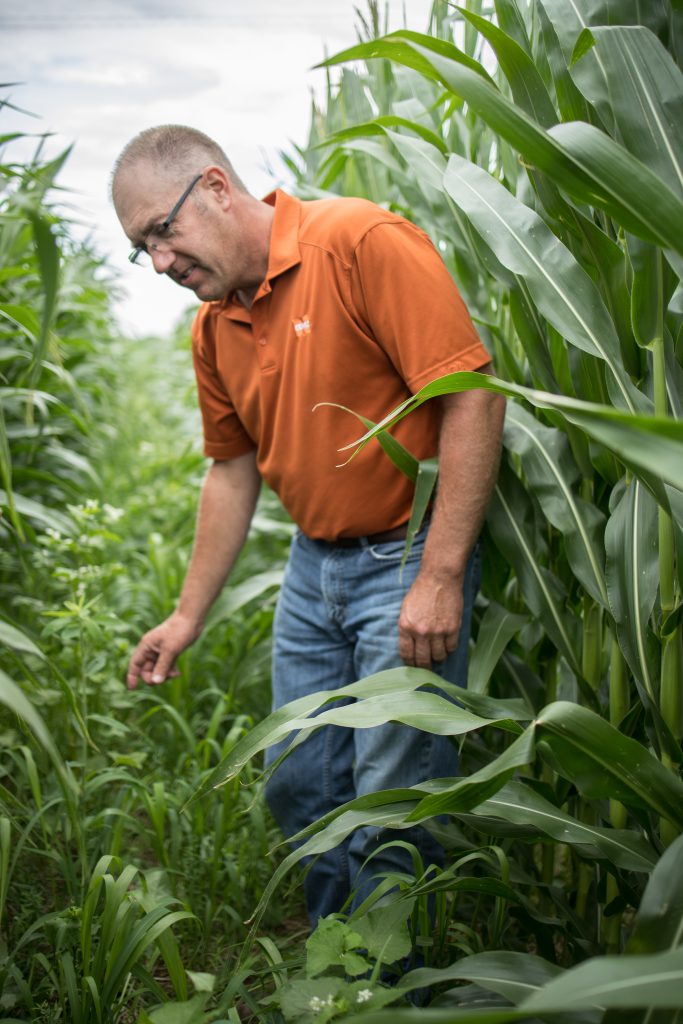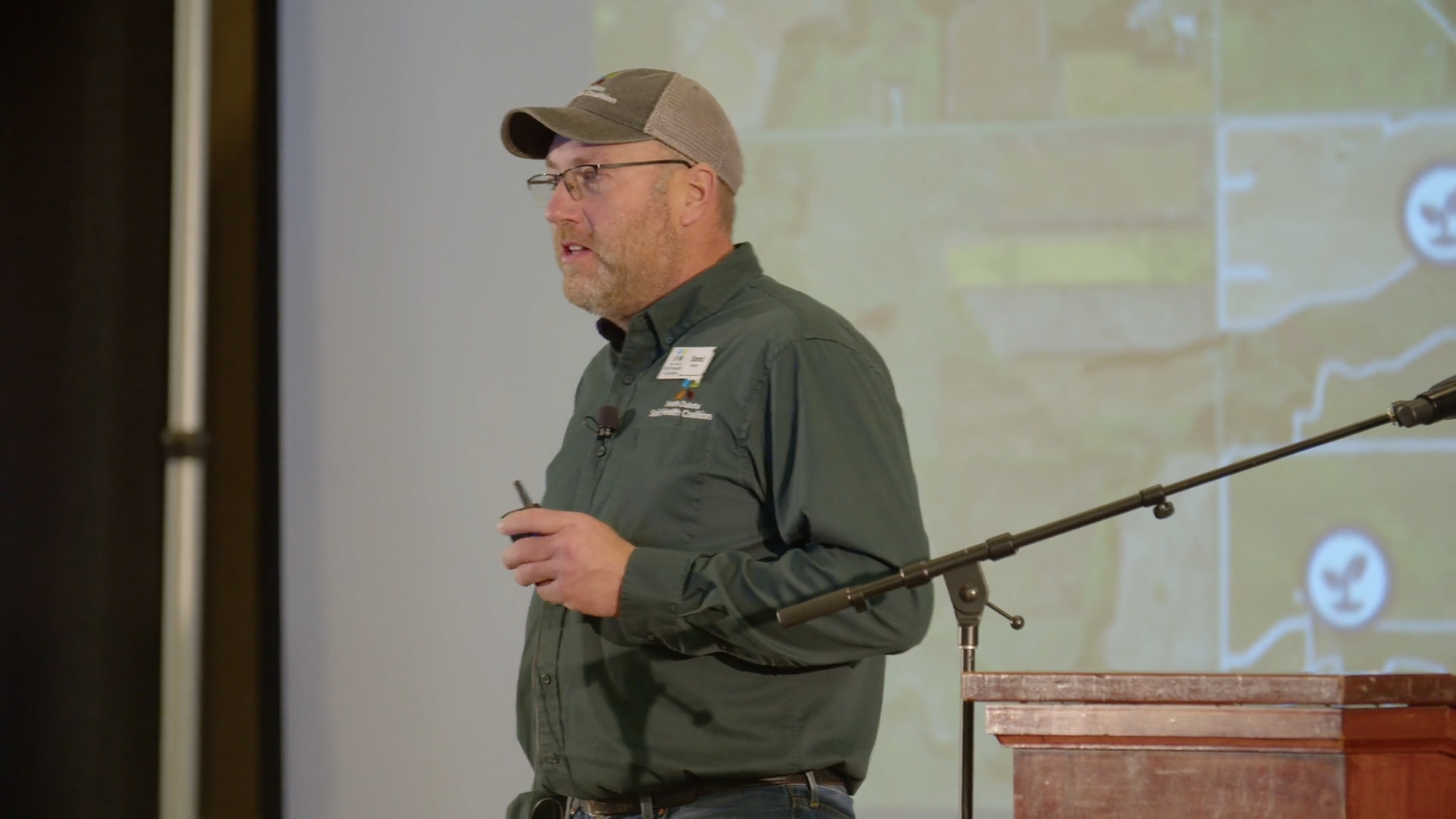As regenerative agriculture gains traction as a hot topic, one question dominates the farming community: Does it pay?
Simply put, yes, it does.
Regenerative ag is an approach to land management that focuses on improving soil health, increasing biodiversity, and improving water quality. It involves practices such as maintaining a cover of residue on the soil, minimizing soil disturbance, planting cover crops, using diverse crop rotations, and grazing livestock, even on cropland.
Managed correctly, these practices can produce crop yields comparable to conventional farming practices while offering significant reductions in producers’ input costs.
Cutting costs
“We don’t always have to focus on increasing revenue,” Natural Resources Conservation Service economist Victor Tuschen said. “We can put as much energy focusing on reducing expenses to maximize our profits.”

Take no-till practices, for instance.
In a recent article published in Ag Daily, author and retired NRCS soil health instructor Jon Stika pointed out that the North Dakota State University Nitrogen Calculator indicates that land managed with no-till practices for at least five years “will generate a 50-pound per acre per year nitrogen credit. At 45 to 60 cents per pound for actual nitrogen, that 50 pounds is worth $22.50 to $30 per acre each year for free!”
There are even more cost savings from avoiding tillage. For starters, there’s no need to own tillage equipment.
“So, you got to look at the depreciation on the equipment from owning it, for one, which is just a fixed cost. Just by having that equipment in the yard, you already have an expense,” Tuschen said.
Of course, more money is saved by not operating tillage equipment. “You got your fuel costs. You got a much bigger tractor,” Tuschen said. “We need more horsepower for the tillage equipment compared to the planting equipment, and so now you’re owning additional tractors or a tractor that just has more horsepower than is required for the rest of the operations.”
These costs are saved through no-till practices without sacrificing revenue.
“We haven’t really seen any effects on yield compared to two tillage passes all the way down to no-till,” Tuschen said. “So, if no-till produces pretty much the same yield as a two-pass tillage operation, eliminating any expenses of that tillage operation should result in profits back in your pocket.”
Diverse crop rotations also offer the potential for more savings.
“There’s a lot of studies out about the interactions between the crops that are growing in the crop rotation,” Tuschen said. “There’s quite a bit of cost savings just on the nutrients. And then also the pest management, your weed suppression, not having to use certain chemicals because just the crop rotation itself is breaking up those life cycles of the weeds.”
One of the easiest ways to diversify a corn-soybean rotation is to add in a small grain, like wheat.
“If you’re putting in the small grain, not only can you harvest that small grain in the summer and have revenue at a time when you normally don’t then be able to work with your operating loan, but you also have the impacts of the reduced herbicide usage, reduced fertilizer, especially nitrogen usage, because that soybean crop impacts the corn or having that small grain residue that’s coming back and breaking down throughout the years,” Tuschen said, referring both to soybean’s nitrogen-fixing properties and the fact that crop residue from the small grain is broken down by soil biology, returning nutrients to the soil.
Cover crops are another important regenerative ag tool. They allow land stewards to keep living roots in the soil for a longer portion of the year. These roots feed the soil biology which is the foundation for all the benefits of healthy soil. Cover crops also take up nutrients at time when there are no cash crops in the field and release those nutrients as they decompose while the next season’s cash crop is growing.
Producers can also turn cover crops into revenue by letting livestock graze them. “The economics out there usually show cover crops being profitable if we can graze them,” Tuschen said.
Real world results
David Kruger, who farms near Twin Brooks, South Dakota, had the opportunity to measure the benefits of no-till practices and a more diverse crop rotation. He has rented land for more than 20 years from a landowner who, for most of that time, insisted that his land be managed with conventional tillage and a corn-soybean rotation. He is pictured at top in a photo by the South Dakota Soil Health Coalition.
This land is adjacent to Kruger’s own land, which he manages with no-till practices and a corn-soybean-rotation that also includes cover crops. Both the rented land and Kruger’s own land have the same soil types.
For six years, Kruger tracked the yields and every input cost, including his living expenses, and compared the results from his land with the rented land.
“I was making about $60 an acre more with wheat in the rotation compared to corn-bean in a conventional tilled (field),” Kruger said during his presentation at the 2025 Soil Health Conference, Jan. 15 to 16 in Watertown, South Dakota. “That doesn’t sound like a huge number, but when you put $60 an acre on 2,000 acres times over six years, it’s still a pretty big number.”

Kruger said that with wheat in the rotation on his no-till fields, he has reduced chemical expenses due to better weed control, he can buy cheaper corn seeds, he uses less fertilizer, his corn yields 15 bushels per acre higher, his soybeans yield 3-4 bushels per acre higher, he has reduced salinity issues in the soil, and he spreads out his workload so that harvest isn’t so intense. Over the six-year time frame of his comparison, these benefits more than outweigh the reduced revenue that wheat returns when compared to corn.
Kruger also said that learning how to successfully market the small grain in the rotation is a huge benefit. “After I’ve learned how to sell spring wheat, you’d be surprised how often I actually make money with wheat, too,” he said.
Kruger isn’t the only one who saw the benefits of his diverse crop rotation. The landowner who insisted that his rented acres be managed conventionally noticed the difference, as well.
“He knows my land is just the same soil type, and after 20 years, three years ago, he came to me, and he said, ‘You better start putting wheat on mine, too, because yours is doing better,’” Kruger said.
For more information about the benefits and implementation of regenerative ag practices, visit www.sdsoilhealthcoalition.org or contact the South Dakota Soil Health Coalition at [email protected] or 605-280-4190.
Stan Wise is with the South Dakota Soil Health Coalition.




